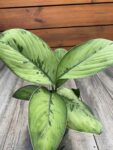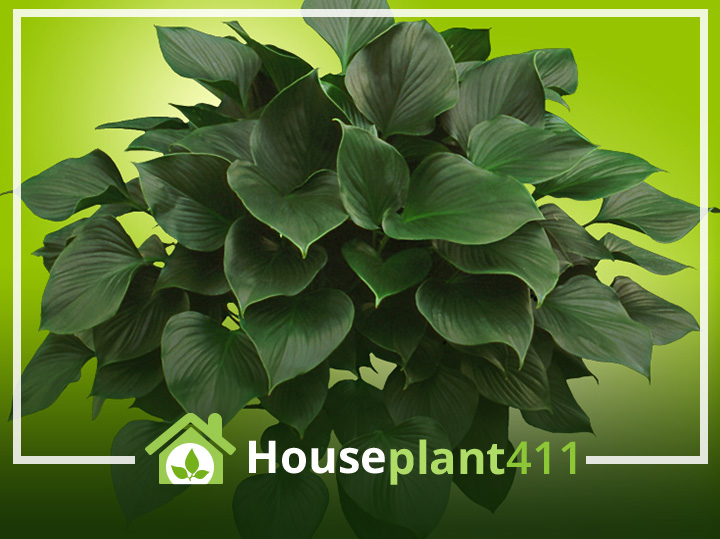An Emerald Gem plant or Homalomena, native to tropical Asia and South America, is an upright plant with dark green, waxy, spade-shaped leaves. Since these plants are usually about 12″-30″ tall, it makes them ideal for areas with height restrictions. Although an Emerald Gem plant is a relative of the easy-care philodendron, it is a bit more finicky and requires more attention. However, if you are tired of the same old houseplants, an Emerald Gem plant makes a nice addition to your plant collection. These plants are considered slightly poisonous and should be kept away from pets and children. Read more about common houseplants that are poisonous in my book Don’t Feed Me to Your Cat: A Guide to Poisonous Houseplants.

Plant Care
Light
An Emerald Gem plant requires medium indirect light but grows even better in bright indirect light. Homalomenas, as they are also called, can survive in low light but become thin and spindly. The bottom leaves of an Emerald Gem plant turn yellow and fall off when there is not enough light.
Water
Watering is the most difficult part of caring for an Emerald Gem plant. When the plant is either over or under watered the bottom leaves may fall off. Over-watering is also the main reason an Emerald Gem plant gets yellow leaves. Always allow the top 50% of the soil dry out before watering. When you do water, water well enough so that it drains out the drip holes in the bottom of the pot. An Emerald Gem plant doesn’t like anything cold, so use warm water and never dump extra ice cubes into the soil.
Fertilizer
Feed an Emerald Gem plant monthly in the spring and summer when the plant is actively growing with a balanced houseplant food diluted to 1/2 the recommended strength. In the fall and winter. fertilize an Emerald Gem plant every other month if the plant is producing new leaves.
Temperature
Emerald Gem plants like warm household temperatures between 65°-80°F ( 18.3°-26.7°C). Keep these plants away from air conditioners and cold drafts.
Humidity
An Emerald Gem plant does well in regular household humidity.
Flowering
These plants produce tall, white spaths.
Pests
Emerald Gem Plants are fairly pest resistant. If spider mites, mealy bugs, or white flies appear, spray with the Green Solution recipe in the Glossary).
Diseases
These plants are fairly disease resistant; though root rot may develop from over-watering.
Soil
Use a quick-draining, loose soil, containing plenty of peat moss, perlite, and hard sand for an Emerald gem plant. This type of soil helps prevent root-rot due to over watering.
Pot Size
An Emerald gem plants likes to be slightly root-bound. Re-pot the plant to the next size container, and nothing larger, once the roots have filled the existing pot. Be sure there are drip holes in the bottom of the pot.
Pruning
This is a very naturally a very symmetrical plant. It rarely needs pruning.
Propagation
The easiest way to propagate an Emerald Gem plant is by plant division. Read more about propagation by plant division in the Glossary of the website
Poisonous Plant Info
An Emerald Gem plant or Homalomena is a slightly poisonous houseplant with a level #1 toxicity.
FAQ
Since the Spaths of an Emerald Gem Plant are so insignificant, I would pinch them off to encourage more leaf growth.
The leaves on your Emerald gem Plant are smaller and further apart because the plant isn’t getting enough light. Try moving your Emerald Gem Plant to an area with bright indirect light and fertilize a little more often.
Yellow bottom leaves is the most common complaint people have about Emerald Gem Plants. here are a few suggestions that might help prevent yellow leaves on an Emerald gem Plant. Be sure your Emerald gem plant is in a warm bright location away from cold drafts. The top 50% of the soil of an Emerald Gem Plant needs to dry out before you water, and always use warm water. It will be a trial & error process until you find the right location and the right amount of water your particular Emerald Gem Plant needs.

